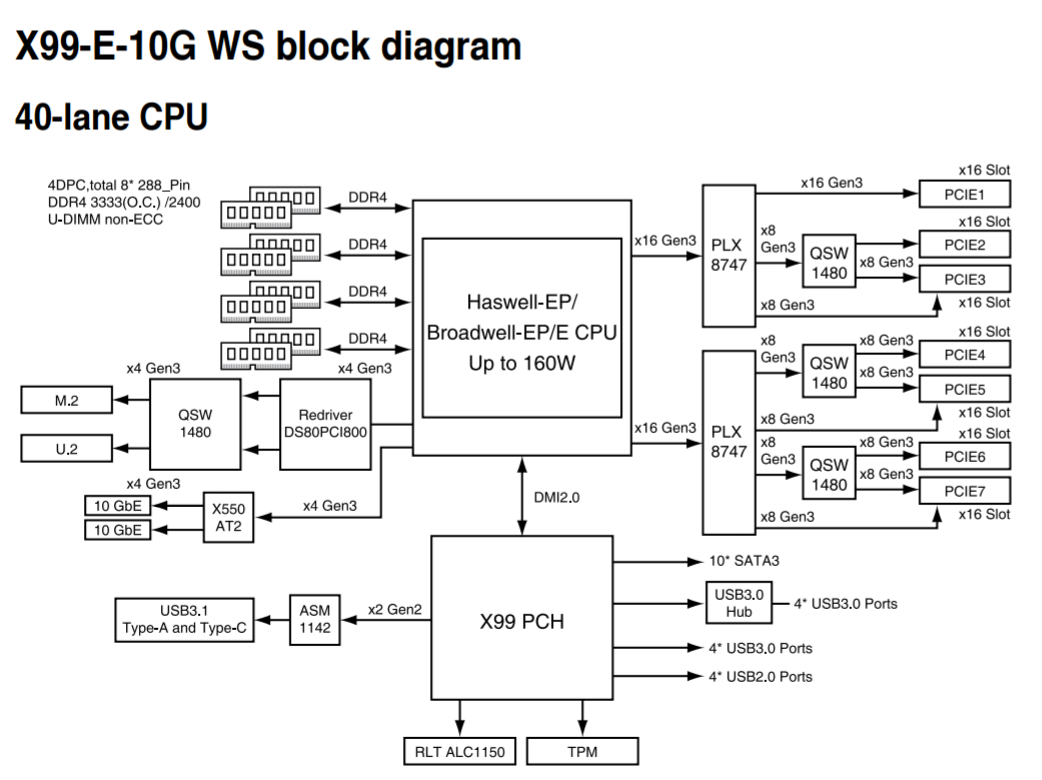Avet
Active member
I always thought PCI-e lanes were set in the BIOS by the motherboard. As in, if you have more devices than the motherboard/CPU allows, the motherboard will cut the bandwidth in half or at whatever increment is appropriate. So if you have two x16 PCI-e slots and you use them for a pair of graphics cards, the system will run at x8 for both slots because you only have x16 lanes for PCI-e devices. I didn't know it would throttle your devices in a variable fashion.
Regular motherboard will half the lanes. For example 2 GPUs on Z370 will run at 8X. But PLX is between PCIE devices and CPU. Example: you can run 4 GPUs in 16X mode on SAGE. GPUs will think that they run on 16X, CPU will think that they run on 16X and everyone is happy. What will PLX do is control on the fly how much bandwidth each card gets. Here is basic explanation how multiplexing works, and block diagram for X99-E-10G WS to help ones that don't know what PLX chips do.
http://www.overclock.net/forum/6-intel-motherboards/1618042-what-multiplexing-how-does-plx-chips-work.html

